 |
ORION RADIO mod. Orionette 1004-I Hungary - 1959 |
 |
 English
English |
Italian
 |
|||
 Orion Radio mod. Orionette 1004-I -
Budapest, Hungary - 1959 - Serial number: 004232.
Orion Radio mod. Orionette 1004-I -
Budapest, Hungary - 1959 - Serial number: 004232.Portable superheterodyne receiver for Long Waves and Medium Waves built in Hungary by Orion Radio of Budapest. The circuit used 7 germanium transistors and a diode: 2SA15, 2SA12, 2SA12, П14, П14, 2P6, 2P6 and OA1160, the antenna was a coil wound on a ferrite core and the IF resonated at 455 kHz. Note that in defiance of the Cold War, the transistor 2SA15 and the two 2SA12 were components produced by Hitachi Ltd. of Tokyo and imported to Hungary. The cabinet was made of wood covered with imitation leather with a handle for transport and on the front it had a large horizontal dial. At the top of the cabinet were the controls and the socket for an external antenna. On the top from the left was the volume knob with the power switch, in the middle was the switch for changing the range (MW, LW), then a socket to which it was possible to connect an external wire antenna and finally on the right was the knob for tuning. The power supply of the Orionette required 2 flat batteries of 4.5V type 3R12. The dimensions were: 9.4 x 7 x 3.1 inch (W,H,D) and the weight without batteries was 3 lb 15.4 oz. © IK3HIA, 2006. |
||||
|
Click on the images to enlarge
|
||||
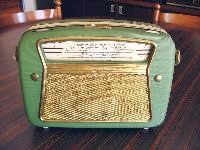 |
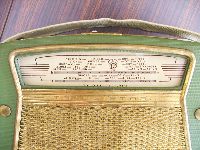 |
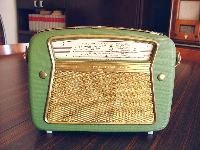 |
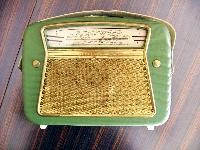 |
|
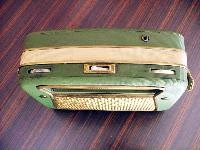 |
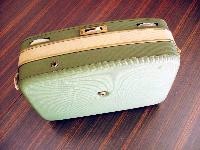 |
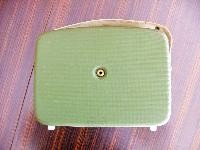 |
 |
|
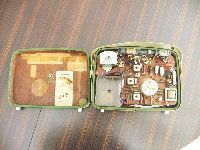 |
 |
 |
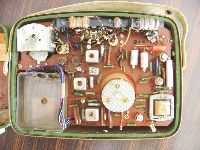 |
|
 Orion Radio mod. Orionette 1004-I - Budapest, Ungheria -
1959 - Numero seriale: 004232.
Orion Radio mod. Orionette 1004-I - Budapest, Ungheria -
1959 - Numero seriale: 004232.Ricevitore supereterodina portatile per Onde Lunghe e Onde Medie costruito in Ungheria dalla Orion Radio di Budapest. Il circuito utilizzava 7 transistor al germanio e un diodo: 2SA15, 2SA12, 2SA12, П14, П14, 2P6, 2P6 e OA1160, l'antenna era una bobina avvolta su nucleo in ferrite e la Media Frequenza risuonava a 455 kHz. Notare che in barba alla guerra fredda, il transistor 2SA15 e i due 2SA12 erano componenti prodotti dalla Hitachi Ltd. di Tokyo e importati in Ungheria. Il mobiletto era in legno ricoperto di finta pelle con maniglia per il trasporto e sul davanti aveva una larga scala parlante orizzontale. Nella parte superiore del mobile c'erano i controlli e la presa per un'antenna esterna. Sulla parte superiore a partire da sinistra c'era la manopola del volume con l'interruttore di accensione, nel mezzo era collocato il deviatore per il cambio gamma (MW,LW), poi una boccola a cui era possibile collegare un'antenna filare esterna e infine a destra c'era la manopola per la sintonia. L'alimentazione dell'Orionette richiedeva 2 batterie piatte da 4,5V tipo 3R12. Le dimensioni erano: 24 x 17,8 x 7,9 cm (L,A,P) e il peso senza batterie era di 1.8 kg. © IK3HIA, 2006. |
||||
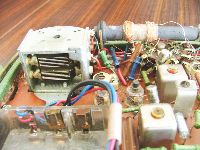 |
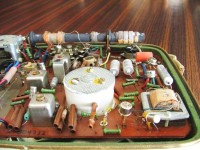 |
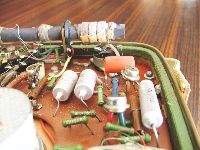 |
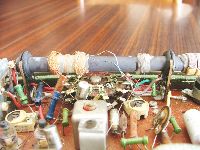 |
|
 |
 |
 |
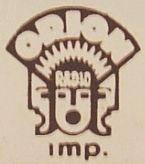 |
|
|
Return to
top of page
|
||||
|
|
Return to: IK3HIA home page |
|
Return to: Transistor Radio |
|
Go to: Transistor diagrams |